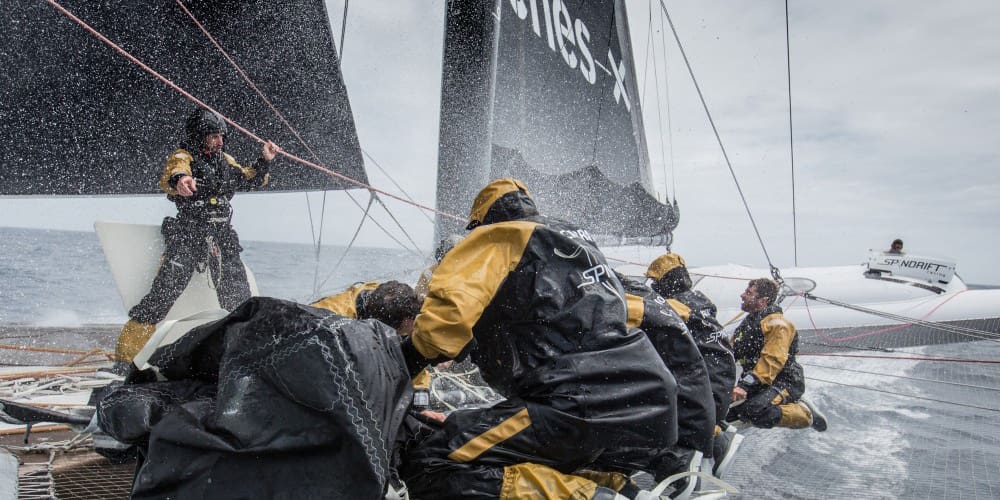JULES VERNE. Spindrift 2 rounded the first cape in the Furious Fifties

Spindrift 2, the trimaran skippered by Yann Guichard crossed the longitude of the Cape of Good Hope, the first of the three great capes of this round-the-world voyage, last night at 02:06 GMT and Cape Agulhas, the symbolic entry into the Indian Ocean at 04:04 GMT. Spindrift 2 has taken 12 days and 02 minutes to descend the Atlantic from north to south since leaving Ushant on November 22 (average speed 27.64 kts). The difference to the record time on the Ushant–Cape Agulhas section, set four years ago by their predecessor and the Jules Verne Trophy holder, was 12 minutes and 44 seconds.
Spindrift 2 now has to negotiate the Indian Ocean, an ocean renowned as the toughest, most extreme and the most dangerous, although it is the shortest section of this round-the-world voyage (at approximately 5,000 miles). It is an ocean that will begin calmly for Dona Bertarelli, Yann Guichard and their 12 crewmates, because an anticyclone has crept under the south of Africa. This area of high pressure, with moderate north-westerly winds, will temporarily slow the progress of the black and gold trimaran, however, it should find the averages of above 30 knots again with the strengthening breeze off the Marion and Prince Edward Islands.

A tied first quarter From a lead of more than half a day when crossing the equator in a record time for the Jules Verne Trophy, Spindrift 2 has lost almost all its advantage in descending the South Atlantic, because of a storm front off Brazil. But for the last three days, Yann Guichard and his crew have been driving hard (700, 800 and 820 miles a day) at the head of a warm front, and crossed the virtual trajectory of Banque Populaire V on Thursday at 1500hrs (GMT) by a margin of about thirty miles.
Already at 47° South, Spindrift 2 is expected to continue on this east-south-east trajectory for a few hours before settling at around 52° South and pointing at the Kerguelen Islands, the halfway point on the road towards the next cape, Cape Leeuwin, about six days away.
But this Indian Ocean crossing looks complicated, with two weather variables to negotiate: the presence of icebergs and drift ice off the coast of the Kerguelen archipelago and the arrival of a tropical depression descending quickly from Madagascar. They will need to constantly take the safest path to avoid the growlers (blocks of ice weighing several tonnes), and to position themselves ahead of the violent disturbance that will “cross the road” just after the Kerguelen Islands.
DISCOVER THE CREW OF SPINDRIFT 2
DISCOVER THE CREW OF IDEC SPORT




